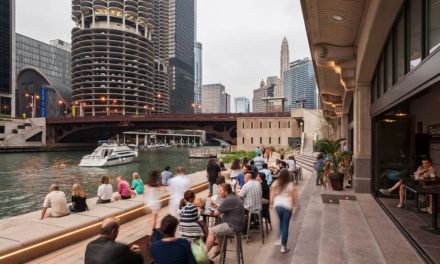Throughout my career I have been solving different research and practical problems related to air conditioning systems, air quality, and human comfort in build environments. While many build designs now focus on energy efficiency and carbon footprint reduction, it is also important to design with an approach that benefits the occupant’s health and well–being. The WELL Building Standard uses just this approach.
The WELL building standard is a performance-based system for measuring, certifying and monitoring features of the build environment that impacts human health and well-being through the air, water, nourishment, light, fitness, comfort and mind. While the WELL standard is not specifically designed for healthcare projects, it addresses major sustainability issues that relate to the overall health and well-being of a building occupant, which is ideal for a healthcare facility. After all, a primary reason for a healthcare facility is to ensure patients are properly cared for, both medically, and in many ways, emotionally.
One of the major issues outlined in the WELL building standard is biophilia. Biophilia posits that humans have an affinity towards the natural world and strives to address our psychological needs to be around life and life-like processes. Biophilic design is all about engaging with nature to assist with a patient’s healing process. Exposure to views and images of nature positively impact a patient’s well-being, can help improve a patient’s emotional state, and as a result speeds up the healing and recovery process.
Biophilic design wants a space to be emotionally supportive to the patient. Beauty and design aesthetics can positively impact an occupant’s morale and mood. Ceiling heights that are proportional to the room’s dimensions provide a comfortable space with an open and free flowing feel to the environment. Incorporating other elements such as artwork and water features help the patient feel as one with their environment.
The integration of aesthetically pleasing elements into space can help a patient’s outlook and derive a measure of comfort or joy from their surroundings. This is a holistic approach to the healing process – the physical space now has a role in the healing process, just as medication and other forms of physical treatment.
The largest portion of the WELL standard relates to air quality, which has a major effect on human health. While there are synergies between LEED and WELL standards, the WELL standard goes much further to address the health and well-being of the person.
Poor ventilation practices can expose occupants to anthropogenic and biogenic pollutants. The WELL standard considers use of high-efficiency particulate air (HEPA) filtration in recirculating air systems. Use of HEPA filtration allows for the removal of volatile organic compounds (VOC), which can be detrimental to one’s health. But, HEPA filtration is not the only option the WELL building standard addresses.
The application of dedicated outdoor air systems is another option considered by WELL. This system improves on the relationship between air pressure and the direction of air flow in an effort to reduce airborne cross-infection risk. A dedicated outdoor air system is ideal in facilities that use an active chilled beam supplemental system or displacement ventilation system. Active chilled beam systems can be used in patient rooms and other areas where the recirculation of room air is acceptable since it delivers a constant volume of outside/primary air to the build environment. The increase or decrease of a beam capacity is executed through the modulation of chilled water supplied to the chilled beam. The chilled beam allows the sensible cooling and heating to be decoupled from the ventilation and dehumidification requirements provided by the dedicated outdoor delivery system with low noise, high level of comfort, and energy efficiency. Consistent air movement around the patient is increased with chilled beam system, and establishes a uniform temperature across the space, improving the environment for the patient and promoting their well-being.
Displacement ventilation operates extremely well with a dedicated outdoor air system as well. It improves air exchange effectiveness in the breathing zone of the room. Outside air is supplied at the floor level with low velocity and then exhausted at the ceiling level. Applying a side wall displacement ventilation system in many areas of the hospital will reduces both initial and operating costs, while providing improved environmental comfort, with low noise and providing cross-infection control.
Since it is coming from nature, outdoor air can provide a positive patient experience and promote the health and well-being of a patient. If the outdoor air quality is equal to the indoor air quality, then use of direct outdoor air will bring to the patient increased comfort without compromising patient air quality.
As already discussed, the WELL standard promotes the application of natural ventilation strategies. However, in order to maintain air quality, a building management system must continuously gather data on a building ventilation system’s performance with continuous monitoring of temperature, humidity, particle count, carbon dioxide, ozone and VOC’s in the internal spaces and in the ambient air environment, couple with an ability to provide real time feedback. Outside air may be further restricted by medical necessity and pressurization limitation. Similar feedback can be provided for potable water quality monitoring (for some of the dissolved metalloids).
Holistic sustainability approach, implementing biophilia, beauty and design concepts, improvement of air and water quality, strategies for comfort, are all a part sustainability goals delivered by WELL standard. The WELL Building Standard uses approach that benefits the occupant’s health and wellbeing. The project sustainability goals and priorities should be connected to the long-term goals and be built-in into the final bottom line.
About the author
 Jacob Tsimanis, PE, WELL AP, LEED AP, CPMP & BCxP
Jacob Tsimanis, PE, WELL AP, LEED AP, CPMP & BCxP
Principal, IDS Group
Jacob Tsimanis, PE, WELL AP, LEED AP, CPMP & BCxP, is currently a principal with IDS Group. He is a registered mechanical engineer with 30 years experience in Healthcare, Science & Technology and Higher Education project designs. Over the past 20 years Jacob Tsimanis has served in various positions ranging from senior mechanical engineer to principal.
He has led multidisciplinary design delivery projects with collaborative group process for various projects. He has a particular interest in low energy performance buildings design, integration of sustainable design principles and reduction of resource consumption, and complex projects commissioning.




